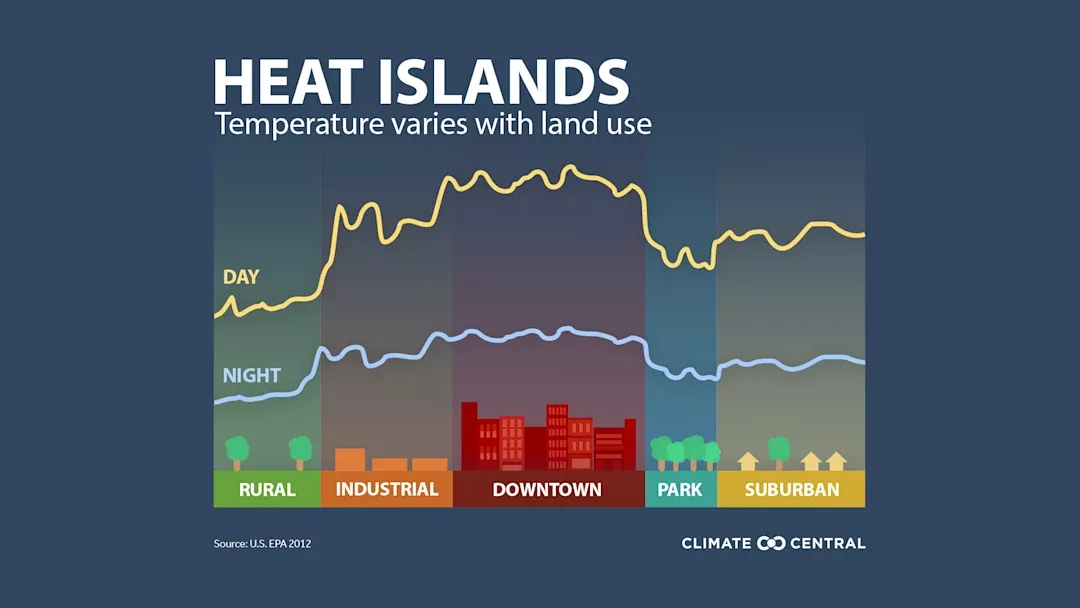Air Quality & Urban Heat Resilience
According to the American Planning Association, urban heat refers to extreme heat within urban areas where buildings, roads, and paved surfaces absorb and re-emit the sun's heat more than natural landscapes, leading to the formation of high-temperature pockets referred to as urban heat islands. This heat island effect can also lead to an increase of air pollution emissions due to higher energy demands to cool urban areas off.

Heat Island Graphic, U.S. EPA 2012
Causes of Heat Islands
The EPA lists five factors that cause heat islands to form:
- Reduced natural landscapes in urban areas - hard, dry surfaces in urban areas provide less shade and moisture than natural landscapes and contribute to higher temperautures
- Urban material properties - human-made materials like pavements and roofing reflect less solar energy and absorb and emit more of the sun's heat
- Urban geometry - cities with many narrow streets and tall buildings become urban canyons, which can block natural wind flow that would bring cooling effects
- Heat generated from human activity - vehicles, air-conditioning units, buildings, and industrial facilities all emit heat into the urban environment
- Weather and geography - calm and clear weather conditions and geographic features can exacerbate the heat island effect
Reducing Heat Islands
The EPA lists several heat island reduction solutions, including:
- Increasing trees and vegetation - learn simple and effective ways plants can cool the environment
- Creating green roofs - explore green roofs as a proven method to reduce heat islands and achieve cost-effective benefits
- Installing cool roofs - find what cool roofs are, how they work to reduce heat islands, and other benefits
- Using cool pavement - learn how cities are using cool pavements and emerging technologies as heat island reduction measures
- Adapting to heat - find ways communities can effectively plan and adapt to heat
- Following smart growth principles - learn the principles to make communities more attractive, livable, and economically vibrant